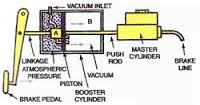Hi guys, today I am going to discuss about engine of automobile and their basic components
What do we generally know about engines??
As per my language engine means-
A motor which is used to rotate the wheels by using some resourceful fuel.
Ok let it be we are not concern about resourceful fuel.
But the bookish language defines it as-
The definition of an engine is a machine or instrument that uses energy to create mechanical power, or a locomotive on a train.
So we got what is engine
Now we will discuss about its components and types
There are mainly two types of engines
1)External combustion engine
2)Internal combustion engine
An external combustion engine (EC engine) is a heat engine where a working fluid, contained internally, is heated by combustion in an external source, through the engine wall or a heat exchanger.
All automobile engines are internal combustion engine
What is internal combustion engines??
An internal combustion engine (ICE) is a heat engine where the combustion of a fuel occurs with an oxidizer (usually air) in a combustion chamber that is an integral part of the working fluid flow.
There are mainly two types of internal combustion engines
1)spark ignition engine (SI engine)
2)compressive ignition engine(CI engine)
Spark engines are petrol engines and cannot be diesel.
In spark engines the mixture of fuel and air is ignited by a spark by a spark plug.
Compressive ignition engine-
In compressive ignition engine, the mixture of fuel and air is ignited by pressure.
What do we generally know about engines??
As per my language engine means-
A motor which is used to rotate the wheels by using some resourceful fuel.
Ok let it be we are not concern about resourceful fuel.
But the bookish language defines it as-
The definition of an engine is a machine or instrument that uses energy to create mechanical power, or a locomotive on a train.
So we got what is engine
Now we will discuss about its components and types
There are mainly two types of engines
1)External combustion engine
2)Internal combustion engine
An external combustion engine (EC engine) is a heat engine where a working fluid, contained internally, is heated by combustion in an external source, through the engine wall or a heat exchanger.
All automobile engines are internal combustion engine
What is internal combustion engines??
An internal combustion engine (ICE) is a heat engine where the combustion of a fuel occurs with an oxidizer (usually air) in a combustion chamber that is an integral part of the working fluid flow.
There are mainly two types of internal combustion engines
1)spark ignition engine (SI engine)
2)compressive ignition engine(CI engine)
Spark engines are petrol engines and cannot be diesel.
In spark engines the mixture of fuel and air is ignited by a spark by a spark plug.
In compressive ignition engine, the mixture of fuel and air is ignited by pressure.
I end this blog with this topic but the engine topic is not yet finished, I will write about two stroke and four stroke engine in the next blog
See you next time
https://youtu.be/5tN6eynMMNw
View this video for combustion engines
Thank you


























